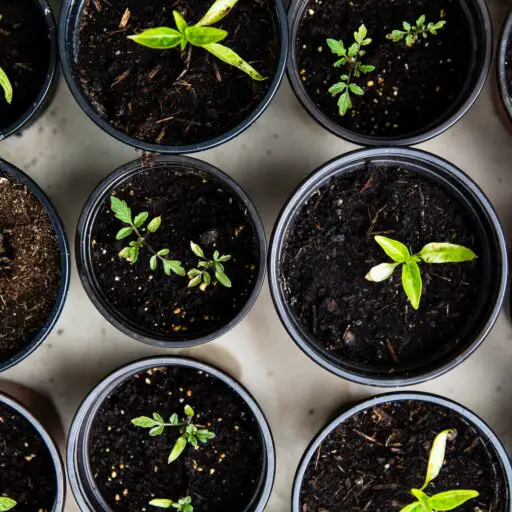Support our educational content for free when you purchase through links on our site. Learn more
Ever wondered what makes a community garden so special? Imagine this: a vibrant green space where tomatoes, peppers, and camaraderie grow side by side. That’s right, a community garden isn’t just about planting seeds; it’s about cultivating community spirit too! But hey, what exactly are the features that make a community garden thrive? Stick around, and you’ll discover not just the basics but some surprising elements too!
Table of Contents
- Quick Answer
- Quick Tips and Facts
- The Roots of Community Gardening
- Blueprints of a Thriving Community Garden
- The Social Vine: Community Engagement in Gardens
- Growth Benefits: Why Your Neighborhood Needs a Garden
- FAQ
- Conclusion
- Recommended Links
- Reference Links
Quick Answer
In a nutshell, a community garden features individual and communal planting areas, accessibility for all members, essential gardening tools, regular maintenance schedules, and community-driven events. These gardens not only provide fresh produce but also serve as a catalyst for community engagement and environmental stewardship. 🌼
Quick Tips and Facts
- Accessibility is Key: Ensure that gardens are wheelchair-friendly and have easy access for all ages.
- Communal Tools: Shared spaces often house communal tools, making it easier for everyone to get involved.
- Events and Workshops: Regularly scheduled activities can boost participation and knowledge sharing.
- Environmental Impact: Community gardens can reduce carbon footprints by localizing food production.
The Roots of Community Gardening
Community gardens sprouted from the desire to make urban spaces greener and bring people together. The first recorded community garden was established in the late 19th century, but they really took root in the 1970s as cities sought to improve urban living conditions. These gardens have since evolved into complex ecosystems of social and environmental activity.
Blueprints of a Thriving Community Garden
- Central Location: Ideally, the garden should be easily accessible to all potential members. Think of it as the community’s green heart!
- Varied Planting Areas: From individual plots to shared spaces, diversity in planting options caters to different preferences and abilities.
- Adequate Water Supply: Features like rainwater harvesting systems and designated watering areas are crucial.
- Tool Sheds: A secure place to store gardening tools ensures that they are maintained and available to everyone.
- Composting Facilities: Turning garden and food waste into compost not only reduces waste but also enriches the soil.
- Educational Signage: Teaching moments are planted all around through informative signs about plants and wildlife.
- Seating and Shade: Areas for relaxation and socialization are essential for community bonding.
- Paths and Accessibility: Well-defined and sturdy paths ensure that everyone, regardless of ability, can navigate and enjoy the garden.
- Regular Maintenance: A schedule for upkeep helps keep the garden flourishing and shows newcomers that this is a cared-for space.
- Community Engagement Programs: Workshops, cooking classes, and garden parties can turn a garden plot into a community plot.
- Safety Measures: Adequate lighting and secure fences can make the garden a safe place for everyone at any time.
- Art and Decoration: Murals and sculptures can beautify the space and reflect the community’s creativity.
The Social Vine: Community Engagement in Gardens
Community gardens are not just about growing plants; they’re about growing relationships. Regular workshops, shared responsibilities, and communal harvests foster a sense of ownership and belonging among participants. These gardens can become hubs of cultural exchange and learning, bridging diverse groups through the universal language of gardening.
Growth Benefits: Why Your Neighborhood Needs a Garden
✅ Environmental Impact: Reduces urban heat, improves air quality, and promotes biodiversity.
✅ Health and Wellness: Gardening is a physical activity that can reduce stress and promote mental well-being.
✅ Social Cohesion: Strengthens community bonds and provides a sense of accomplishment.
✅ Economic Benefits: Can reduce grocery bills and foster local businesses related to gardening and sustainability.
FAQ
What are the characteristics of a community garden?
Community gardens typically feature a mix of individual and communal plots, accessibility features, tools, and educational programs—all designed to foster community interaction and sustainable practices.
What should be included in a community garden?
Essential elements include varied planting areas, water access, tool storage, composting facilities, and areas for community engagement and education.
What are 5 benefits of a community garden?
- Environmental sustainability
- Enhanced community bonding
- Health and wellness improvements
- Educational opportunities
- Economic advantages
What makes a community garden successful?
A successful community garden maintains strong participation, clear organization, regular maintenance, and active community engagement, creating a welcoming and productive environment.
Conclusion
Community gardens are more than just plots of land; they are dynamic spaces that nurture both crops and community spirit. Whether you’re a seasoned green thumb or a curious newcomer, participating in a community garden can offer numerous benefits and enrich your connection to your neighborhood and the environment.
Recommended Links
Reference Links
Ready to dig deeper into community gardening? Why not visit a local garden or start one in your neighborhood today? 🌻

